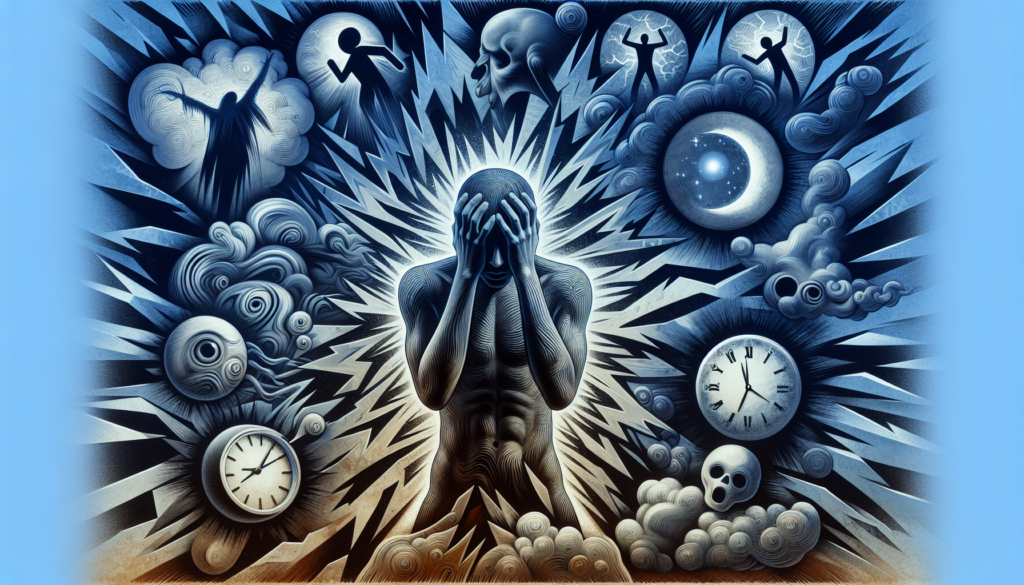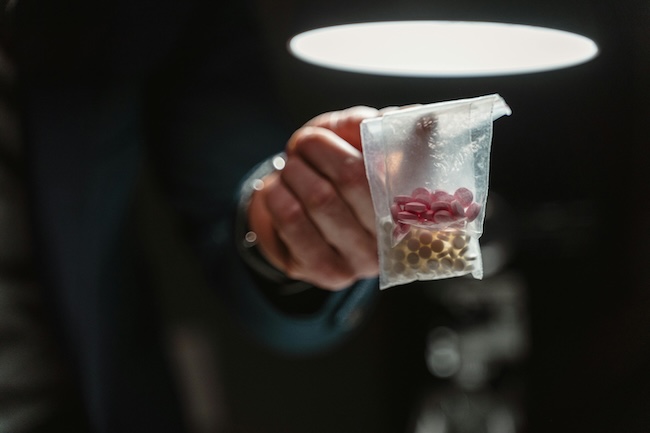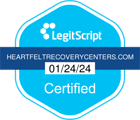
Wondering about the dopesick meaning? ‘Dopesick’ is a term for the withdrawal symptoms felt after stopping opioid use. This article explains what dopesickness is, its symptoms, and how it can be managed. We’ll also look at why it happens and share stories of recovery.
Key Takeaways
- The term ‘dopesick’ refers to the withdrawal symptoms experienced after discontinuing opioid use, characterized by both physical and psychological distress.
- Managing dopesick symptoms requires a combination of medical intervention, supportive care, and participation in treatment programs, with medication-assisted treatment being a key component.
- Post-Acute Withdrawal Syndrome (PAWS) can occur after initial withdrawal, causing lingering symptoms that require ongoing support and monitoring to prevent relapse.
Table of Contents
What Does “Dopesick” Mean?
The colloquial term “dope sick” is used to describe the symptoms of sickness that emerge from abruptly discontinuing the use of opioids. The notion gained traction with broader audiences partly due to its portrayal in media and literature, especially through Beth Macy’s 2018 publication which sheds light on the severe consequences brought about by the opioid epidemic.
A variety of commonly known opioids such as heroin, oxycodone, fentanyl, morphine, and Vicodin can lead individuals to experience dope sickness. These drugs progressively modify brain chemistry resulting in a physical need for them and subsequent opiate withdrawal symptoms once usage ceases. Films like “Trainspotting” graphically illustrate these difficult aspects of addiction and provide an unvarnished view into what being dope sick entails.
Relapse is frequently prompted by trying to avoid or alleviate opioid withdrawal discomforts—a formidable hurdle those facing addiction must surmount—signaling how critical it is to comprehend dopesickness thoroughly. While not usually posing a direct threat to life itself, the profound unease caused by withdrawing from opiates makes it considerably challenging for individuals seeking liberation from their dependency on these substances. Effective management of opiate withdrawal symptoms remains an essential element in conquering opioid addiction.

The Physical and Psychological Symptoms of Being Dopesick
Enduring opioid withdrawal, often referred to as being dope sick, is comparable to suffering through an intense case of the flu. The term encompasses a spectrum of both physical and psychological symptoms that can be extremely distressing. Intense physical discomfort such as muscle cramps, vomiting, and diarrhea are prominent signs indicating the body’s struggle with opioid dependency in absence of the substance.
Withdrawal from opioids also precipitates numerous psychological disturbances along with its physical repercussions. These include feelings like anxiety and agitation coupled with profound drug cravings which exacerbate emotional distress during this period. A sense of hopelessness frequently amplifies these challenges for those attempting to cease opioid use. Hence, recognizing how opiate withdrawal feels, including all related symptoms, becomes critical in navigating this trying phase effectively.
The underlying cause behind these withdrawal indications stems from changes within brain chemistry due to prolonged exposure to opioids – notably affecting noradrenaline release patterns. This disruption manifests physically once the drugs are discontinued, leading to heightened levels of noradrenaline which results in jitteriness along with muscle cramps among other ailments tied directly back to increased activity within certain areas of the brain. Managing withdrawals necessitates dealing not only with profound bodily reactions but equally daunting mental health struggles synonymous with cessation efforts against opioids usage.
Why Do Opioids Cause Dopesickness?
Opioids interact with mu-opioid receptors in the brain, keeping these receptors continually activated, which induces both euphoria and analgesia. With prolonged drug use, the body’s natural chemistry is altered as it becomes accustomed to functioning with opioids.
Upon cessation of opioid consumption, a sudden deactivation of these previously stimulated receptors precipitates withdrawal symptoms. The individual’s system struggles without the drug due to its dependency on it for normal operation. As tolerance builds up over time—the reduced sensitivity of mu-opid receptors—increased dosages are required for achieving similar effects.
Addiction is heavily influenced by the mesolimbic reward pathway that opioids activate within the brain structure responsible for processing pleasure and reinforcement—a key factor behind compulsive drug-seeking behavior and persistent use despite adverse consequences. Recognizing these biological underpinnings sheds light on why withdrawal from opioids can be so challenging and informs strategies for effectively managing dopesickness related to addiction recovery.
How Long Does Dopesickness Last?
The length of time individuals experience withdrawal symptoms, often referred to as dopesickness, can vary greatly depending on a number of determinants. Symptoms typically emerge between 8-24 hours following the last dose for those using short-acting opioids and within 12-48 hours after discontinuing long-acting opioids. The most intense symptoms tend to reach their peak in the range of 1-3 days from onset.
Most signs that accompany drug withdrawal begin to decrease over the course of a week. Certain effects may endure beyond this period. Individuals might find themselves grappling with these discomforts for anywhere from 10 up to 20 days. Factors such as how frequently and intensely one has engaged in drug use, along with which particular opioid was used, play significant roles in determining both the severity and timeframe of dopesickness.
Understanding what lies ahead during the withdrawal process provides individuals undergoing it—and those offering them support—with essential insights into managing care throughout this demanding phase successfully. Recognizing there is an endpoint helps sustain motivation among people enduring symptoms associated with withdrawing from drugs.

Managing Dopesick Symptoms
Effective management of withdrawal symptoms from addiction necessitates a blend of medical and supportive care strategies. Medication Assisted Treatment (MAT) is pivotal in reducing cravings and mitigating the severity of withdrawal symptoms, with medications such as methadone and buprenorphine being instrumental in diminishing the discomfort linked to withdrawal.
The implementation of a medical detox regimen facilitates a secure and comfortable journey through the process of withdrawal. It encompasses consistent oversight by healthcare professionals specialized in addiction treatment, who monitor for any emerging symptoms or potential complications frequently throughout each day. Maintaining hydration levels along with providing vitamin supplements plays an essential role during this stage to assist symptom management.
Incorporating support groups alongside cognitive-behavioral therapy assists individuals by transforming detrimental thought patterns into positive ones while fostering an environment rich in encouragement and mutual accountability. These inclusive approaches significantly bolster one’s prospects for successfully attaining long-term sobriety when grappling with addiction treatments.
Professional Treatment Options for Opioid Addiction
Treatment options for addiction to opioids are diverse and robust, encompassing a variety of methods. One pivotal aspect is medication-assisted treatment (MAT), which employs pharmaceuticals such as buprenorphine or methadone to aid individuals in overcoming opioid addiction by alleviating withdrawal symptoms and diminishing cravings, thus easing the path towards recovery.
Programs dedicated to substance abuse treatment frequently incorporate personalized therapy, collective group sessions, and educational tools. Their objective is to delve into the root causes of an individual’s addictive behaviors while equipping them with necessary strategies for sustained sobriety. Support networks and ongoing outpatient counseling play a crucial role in supporting those wrestling with opioid dependence by aiding relapse prevention efforts.
Institutions like Recovery Ranch PA provide an extensive spectrum of services that span from medical detoxification processes through various forms of therapy—all designed to assist people during their journey out of opiate dependency. Availing oneself of these professional treatments significantly bolsters the likelihood for achieving lasting recovery from addiction.

Preventing Dopesickness: Tips and Resources
The early detection of addiction symptoms and prompt intervention are critical in averting the harsh reality of dope sickness. Observable shifts in behavior, along with a noticeable drop in academic or professional productivity, may point to an emerging problem with drug abuse or drug addiction. Ensuring access to evaluation and treatment options is essential for those contending with substance use disorders or mental health challenges.
Steering clear of drugs altogether and actively seeking help when faced with addiction can stave off the painful experience associated with dope sickness. Participation in structured treatment plans tailored to address individual needs surrounding addiction while joining forces with support groups offers vital aid and motivation necessary for sustaining a life free from substances.
Maintaining one’s physical and emotional well-being is crucial not only during but also after engaging in opioid usage. To forestall the onset of dope sickness, it’s imperative that individuals adopt a hands-on approach to managing their battle against addiction by leveraging accessible interventions alongside prioritizing their overall health—a combination that lays the groundwork for bypassing severe discomfort linked to withdrawal as well as other potential hazards tied to dope sickness.
The Risks and Dangers of Dopesickness
The withdrawal symptoms associated with dopesickness can result in severe health threats. During the withdrawal process, significant dehydration and imbalances in electrolytes may induce critical complications, including potential fatal outcomes or lasting harm. Such withdrawal symptoms could intensify pre-existing medical conditions and might even cause issues like aspiration pneumonia as a consequence of excessive vomiting.
Those suffering from dopesickness often engage in hazardous actions to mitigate their distress. Such behaviors include participating in illicit acts or consuming potent opioids such as fentanyl at high dosages that have an increased risk of overdose. The urgent need to evade the discomfort of withdrawal drives people to adopt extreme measures that jeopardize their safety.
After completing detoxification, reinitiating drug use is particularly dangerous due to a lowered tolerance level. It significantly raises the likelihood of experiencing an overdose. Recognizing these dangers underscores how crucial it is for those undergoing treatment—and those offering support—to receive thorough care throughout this challenging period.
Post-Acute Withdrawal Syndrome (PAWS)
The syndrome known as Post-Acute Withdrawal Syndrome (PAWS) encompasses a range of persistent symptoms following the initial period of acute withdrawal. Individuals may endure sleep disruptions, muscle discomforts, and various psychological distresses such as anxiety or depression during this phase. The severity of PAWS can be highly daunting for those affected and may deter them from pursuing assistance.
For individuals grappling with PAWS, sustained backing is vital in facilitating their journey through recovery. This support comes in many forms – therapy sessions, rehabilitation programs, and peer-led groups – all geared towards providing aid and fostering the resilience needed to manage these taxing times. Close observation is key for those struggling with PAWS to help prevent any relapses back into opioid dependency.
Tackling the enduring issues presented by PAWS is imperative for securing ongoing sobriety and adequately managing the prolonged consequences associated with withdrawing from opioids.
Success Stories: Overcoming Dopesickness
Tales of individuals who have triumphed over the affliction of addiction serve as a beacon of hope and encouragement for those battling similar struggles. Shelbia’s resolve to turn her life around, propelled by the onset of motherhood, is testament to how powerful maternal drive can be in spurring one towards recovery.
Michael’s narrative illustrates that hitting one’s lowest point can act as a catalyst for change. His commitment to seek expert guidance exemplifies the unwavering determination needed to take back control from addiction. Marilyn successfully fought against her dependency on prescription painkillers and heroin and now champions medication-assisted treatment, serving as an inspiration for others embarking on their journey toward healing.
Ben managed not only to defeat his own demons with the help of family intervention, but also chose Education while sharing his story so he might aid others grappling with similar issues. Cristin transitioned from being engulfed in opioid addiction to contributing meaningfully within the healthcare sector, showing it is possible for individuals to reshape their destinies after breaking free from addictive behaviors.
Together these narratives underscore successful rehabilitation outcomes and emphasize just how crucial support systems are when striving towards—and preserving—freedom from substance dependence.
Summary
Grasping the concept of dopesickness is vital for individuals impacted by opioid addiction. It’s important to identify the symptoms, understand their origins, and discover methods for coping with them to enhance the chances of successful recovery. The content within this blog post delves into what dopesickness entails including its characteristics, reasons behind it, as well as various approaches to handle and prevent it.
Embarking on a path toward healing from opioid addiction can be arduous. Nevertheless, achieving sobriety is attainable with adequate backing and tools at your disposal. Through highlighting both the hazards associated with dopesickness and offering actionable guidance coupled with stories of triumphs over adversity, our aim is to motivate and encourage those grappling with addiction issues. Remember that recovering from dependency is an ongoing process rather than a fixed endpoint—every progressive step brings closer reclamation of an existence not dictated by substance dependence.

Frequently Asked Questions
What does the term “dopesick” refer to?
The term “dopesick” refers to the withdrawal symptoms that an individual undergoes after discontinuing opioid use. These symptoms can be physically and emotionally distressing, highlighting the challenges of opioid addiction.
What are some common physical symptoms of being dopesick?
Common physical symptoms of being dopesick include vomiting, diarrhea, muscle cramps, sweating, and chills. These symptoms highlight the distress experienced during withdrawal.
Why do opioids cause dopesickness?
Opioids cause dopesickness because they change the brain’s chemistry, leading to dependence; when their use ceases, withdrawal symptoms occur as the body reacts adversely to the absence of the drug.
How long does dopesickness typically last?
Dopesickness typically lasts about 10 to 20 days, with most withdrawal symptoms beginning to subside within one week.
What are the risks associated with dopesickness?
Dopesickness poses significant risks such as severe dehydration and electrolyte imbalances, which may result in serious health complications or overdose due to dangerous behaviors undertaken to alleviate symptoms.
Dr. Mitchell G. Cohen is a board-certified Internal Medicine specialist with over 34 years of experience in patient-centered healthcare. A graduate of Hahnemann University School of Medicine, Dr. Cohen completed his internship at the University Health Center of Pittsburgh, where he gained invaluable hands-on experience. He is also a certified addiction specialist, holding membership with the American Society of Addiction Medicine (ASAM).
Currently based in Nashua, NH, Dr. Cohen is affiliated with Saint Joseph Hospital, where he provides comprehensive care focusing on both internal medicine and addiction treatment. His expertise includes prevention, diagnosis, and management of adult diseases, as well as specialized care for individuals facing substance use disorders.
Dr. Cohen is committed to fostering open communication, ensuring his patients are fully informed and empowered to make confident decisions about their health and treatment options.

MD Mitchell Grant Cohen
Dr. Mitchell G. Cohen is a board-certified Internal Medicine specialist with over 34 years of experience in patient-centered healthcare. A graduate of Hahnemann University School of Medicine, Dr. Cohen completed his internship at the University Health Center of Pittsburgh, where he gained invaluable hands-on experience. He is also a certified addiction specialist, holding membership with the American Society of Addiction Medicine (ASAM).
Currently based in Nashua, NH, Dr. Cohen is affiliated with Saint Joseph Hospital, where he provides comprehensive care focusing on both internal medicine and addiction treatment. His expertise includes prevention, diagnosis, and management of adult diseases, as well as specialized care for individuals facing substance use disorders.
Dr. Cohen is committed to fostering open communication, ensuring his patients are fully informed and empowered to make confident decisions about their health and treatment options.







